Understanding Year-End Dynamics
The holiday season brings unique challenges to work-life balance and personal well-being.
Many people feel overwhelmed as they try to juggle end-of-year responsibilities with festive obligations.
The Impact of the Holiday Season on Work-Life Balance
The holiday rush often disrupts normal routines.
Employees face increased workloads as they rush to meet year-end deadlines. This can lead to longer hours and added stress.
At the same time, social and family commitments multiply.
People may struggle to find time for:
- Holiday shopping
- Family gatherings
- Travel plans
- Festive events
This clash between work and personal life can leave individuals feeling pulled in multiple directions.
Many find it hard to say no to extra tasks or invitations, further straining their schedules.
Assessing Personal Well-Being Amid Year-End Rush
The hectic pace of year-end activities can take a toll on personal health. Stress and anxiety often spike during this period.
Common signs of strain include:
- Fatigue
- Irritability
- Poor sleep
- Neglected self-care
It’s crucial for individuals to check in with themselves regularly.
They should assess their energy levels and emotional state.
Taking breaks and setting boundaries becomes even more important during this busy time.
Financial worries can add to the stress.
Holiday spending and year-end expenses may cause concern.
People should create realistic budgets to avoid overspending and subsequent anxiety.
Strategies for Effective Time Off Planning
Planning time off well helps balance work and life. Good planning lets employees recharge while keeping work on track.
Setting Realistic Expectations for PTO
When planning paid time off (PTO), it’s key to set realistic expectations.
Employees should check their PTO balance and company policies first.
They need to consider busy periods at work and plan around them.
It’s smart to spread PTO throughout the year instead of saving it all for the end.
Managers can help by setting clear deadlines and workload expectations.
This allows team members to plan their time off without stress.
The Role of Clear Communication in PTO Approval
Clear communication is vital for smooth PTO approval.
Employees should talk to their managers early about time off plans.
They should explain how their work will be covered while they’re away.
Offering solutions shows responsibility and makes approval more likely.
Managers can discuss the importance of taking time off with their teams.
This creates a culture where breaks are valued.
A shared calendar for team PTO can prevent scheduling conflicts. It helps everyone see who will be out when.
Prioritizing Mental Health and Self-Care
Taking care of mental health and practicing self-care are crucial during busy times. These strategies can help manage stress and maintain well-being.
Incorporating Self-Care Into Daily Routine
Self-care doesn’t have to be time-consuming. Small acts throughout the day can make a big difference.
Scheduling time for self-care is important for both individuals and their loved ones.
Some easy ways to practice self-care daily include:
- Taking short breaks to stretch or breathe deeply
- Drinking water regularly
- Eating nutritious meals and snacks
- Getting enough sleep each night
Engaging in enjoyable activities, even for just a few minutes, can boost mood and energy levels.
This might involve reading, listening to music, or calling a friend.

Dealing With Stress During Peak Business Periods
Peak business periods often bring increased stress.
It’s essential to recognize signs of stress and take action to manage it effectively.
Some strategies to cope with stress include:
- Prioritizing tasks and breaking them into smaller, manageable steps
- Practicing mindfulness or meditation techniques
- Reaching out to colleagues or mentors for support
- Taking regular breaks to recharge
It’s also important to maintain boundaries between work and personal life.
This might mean setting specific work hours and avoiding checking emails outside of those times.
Optimizing Work Performance
The end of the year brings unique challenges for maintaining productivity and preparing for performance evaluations. Effective strategies can help employees excel during this busy time.
Preparing for Performance Reviews
Performance reviews are a key part of year-end activities.
Employees should gather accomplishments and metrics from throughout the year.
Quantifiable results are especially valuable.
It’s helpful to review goals set at the start of the year and assess progress.
Employees can prepare talking points about their contributions and growth areas.
They should be ready to discuss future goals and development opportunities.
Seeking feedback from colleagues can provide useful insights before the review.
It’s important to approach the review with a positive, open mindset.
This allows for constructive dialogue about performance and career growth.
Maintaining Productivity Without Burnout
Staying productive during busy periods requires careful planning.
Employees should prioritize projects based on urgency and importance.
Breaking large tasks into smaller, manageable steps can help maintain momentum.
Time management techniques like the Pomodoro method can boost focus.
This involves working in short bursts with brief breaks.
Setting realistic daily goals helps track progress and maintain motivation.
Taking regular breaks is crucial to avoid burnout.
Even short pauses for stretching or deep breathing can refresh the mind.
Employees should communicate openly with managers about workload concerns.
Maintaining a healthy work-life balance is essential for sustained productivity.
This includes getting enough sleep, exercise, and time for personal activities.
Navigating Family Commitments
Family time is crucial during busy periods. Balancing work and home life requires thoughtful planning and open communication. Here are strategies to manage family commitments effectively.
Integrating Quality Family Time into Busy Schedules
Plan family activities in advance.
Use a shared calendar to block out time for meals, outings, or game nights. This helps everyone stay on the same page.
Be flexible with timing.
Early morning breakfasts or late-night snacks can be great for connection when schedules are tight.
Make the most of weekends.
Plan fun outings or relaxing days at home to recharge together.
Use technology wisely.
Video calls during lunch breaks can help stay connected with family members during busy workdays.
Create daily rituals like bedtime stories or after-dinner walks.
These small moments add up to meaningful family time.
Encouraging Family Support in Work Commitments
Explain work responsibilities to family members. This helps them understand busy periods and fosters empathy.
Involve family in work-related decisions when possible.
Their input can be valuable and make them feel included.
Ask for help with household tasks.
Delegating chores can free up time for both work and family bonding.
Teach children about work-life balance.
This can help them develop their own time management skills.
Express gratitude for family support.
Acknowledging their help strengthens bonds and encourages continued understanding.
Consider family-friendly workplace policies.
Flexible hours or work-from-home options can improve work-life integration.
Setting and Respecting Boundaries
Establishing clear boundaries is crucial for maintaining balance during the hectic year-end period. It helps individuals protect their time, energy, and well-being while meeting both personal and professional obligations.
The Art of Saying No during the Holiday Season
Learning to say no is a vital skill for setting boundaries.
During the holidays, people often face numerous invitations and requests.
It’s important to prioritize personal time and energy.
Individuals should assess each request carefully.
They can politely decline non-essential commitments. A simple “I’m sorry, but I can’t take that on right now” is often enough.
People shouldn’t feel guilty about saying no.
It’s a way to respect their own needs and limits.
By declining some invitations, they free up time for truly important activities and relationships.
Respecting Personal and Professional Limits
Setting limits at work is equally important.
Employees should communicate their availability clearly to colleagues and supervisors.
They can schedule breaks and personal time in their work calendars.
It’s essential to stick to these boundaries once set.
This means not checking work emails during family time or personal days.
It also involves leaving the office on time and not taking on extra projects that interfere with planned time off.
Managers can support this by respecting employees’ time off and not sending work-related messages outside of business hours.
This creates a culture of balance and respect for personal boundaries.
Maintaining Workplace Harmony
Creating a positive work environment is key during busy times. Small acts of kindness and thoughtful celebrations can boost morale and strengthen team bonds.
Fostering a Culture of Kindness at Work
Encouraging kindness at work can ease year-end stress.
Team leaders can set an example by showing appreciation for staff efforts. A simple “thank you” or personal note can go a long way.
Coworkers can support each other through busy periods.
Offering help with tasks or bringing in treats can lift spirits.
Creating a “kindness board” where employees can post nice messages about colleagues can spread positivity.
Managers should be mindful of workloads and deadlines.
Giving employees realistic goals can prevent burnout.
Flexibility with work hours or locations can also show understanding during hectic times.
Celebratory Practices and Workplace Culture
End-of-year celebrations can boost team morale.
Planning inclusive events that respect diverse traditions is important.
A potluck lunch where employees share favorite holiday dishes can be a fun way to connect.
Recognition ceremonies for yearly achievements can motivate staff.
Highlighting both individual and team successes shows appreciation for hard work.
Small gifts or bonuses, if possible, can make employees feel valued.
Informal gatherings like after-work drinks or team outings can strengthen workplace bonds.
These events should be optional to respect personal time. Virtual options can include remote workers in festivities.
Decorating the office or creating festive virtual backgrounds for video calls can add cheer.
A workplace giving program or volunteer day can foster team spirit and help the community.
Maximizing Downtime
Downtime is crucial for recharging and finding balance during the hectic year-end period. Making the most of this time can lead to improved well-being and creativity.
Discovering New Hobbies or Revisiting Old Ones
Exploring new interests or rekindling past passions can be a great way to use downtime productively.
Reading, painting, or learning a musical instrument can provide a refreshing break from work-related stress. Gardening or cooking might offer a sense of accomplishment and relaxation.
For those seeking adventure, trying outdoor activities like hiking or photography can be invigorating.
Online courses or workshops in topics of interest can also be engaging ways to spend free time.
Many find that revisiting childhood hobbies brings joy and nostalgia.
This could mean dusting off old board games, picking up a forgotten craft, or rediscovering the pleasure of building models.
Detaching From Work Mentally and Physically
Creating a clear separation between work and personal time is essential for genuine relaxation.
Setting boundaries by turning off work notifications and emails outside of office hours can help achieve this.
Physical activities like yoga, meditation, or exercise can aid in mental detachment from work stressors.
These practices not only improve physical health but also promote mental clarity and emotional balance.
Engaging in social activities with friends and family who aren’t work-related can provide a refreshing change of perspective.
Planning short trips or staycations can also offer a much-needed break from the work environment.
It’s important to resist the urge to check work-related tasks during downtime.
This may require practice and setting clear expectations with colleagues about availability during off-hours.
Cultivating Reflection and Gratitude
Taking time to reflect and express gratitude can boost well-being and job satisfaction during the busy year-end period.
These practices help put work stresses in perspective and nurture a positive mindset.
Reflecting on Personal Fulfillment and Achievements
Reflection allows employees to recognize their growth and accomplishments.
It’s helpful to set aside quiet time to ponder the past year’s experiences.
People can ask themselves key questions:
- What am I most proud of this year?
- How have I grown professionally?
- What challenges did I overcome?
Journaling or discussing reflections with a trusted colleague can deepen insights.
Some find creating a visual representation of their year’s journey through art or a timeline to be meaningful.
Reflection shouldn’t focus solely on work.
It’s important to consider personal growth, relationships, and life outside the office too.
Expressing Gratitude in Professional and Personal Spheres
Gratitude improves mood and strengthens connections with others.
At work, employees can thank colleagues who’ve supported them.
Simple ways to show appreciation:
- Send thoughtful emails or handwritten notes
- Give small gifts or treats
- Publicly acknowledge others’ contributions
Managers can host year-end events to celebrate team achievements.
These gatherings boost morale and reinforce a culture of gratitude.
At home, people might start a gratitude journal or share daily appreciation with loved ones.
This cultivates positivity and helps maintain work-life balance during busy times.
Mitigating Digital Overload
The holiday season brings a surge of digital content and notifications. Managing this influx is crucial for maintaining focus and well-being during the year-end crunch.
Handling the Influx of Holiday Ads and Promotions
The holiday season bombards us with ads and promotions across all digital platforms. To manage this:
• Use ad-blocking software on browsers and devices.
• Unsubscribe from unnecessary email lists and newsletters.
• Set up email filters to automatically sort promotional messages.
Digital overload can lead to stress and reduced productivity.
It’s important to limit exposure to non-essential content.
Consider designating specific times for checking promotions.
This helps avoid constant interruptions and allows for more focused work periods.
Create a separate email address for promotional sign-ups.
This keeps your main inbox clutter-free and allows you to check deals on your own terms.
Digital Detox Strategies for Better Focus
Implementing a digital detox can significantly improve focus and reduce stress. Here are some effective strategies:
- Set device-free zones in your home or office.
- Use apps that limit screen time or block distracting websites.
- Practice the Pomodoro Technique: 25 minutes of focused work followed by a 5-minute break.
Turn off non-essential notifications on your devices.
This reduces interruptions and helps maintain concentration on important tasks.
Schedule regular “offline” hours.
Use this time for face-to-face interactions, physical activity, or quiet reflection.
Prioritize self-care practices to recharge.
Even short breaks from digital devices can boost creativity and productivity.
Takeaways
The year-end crunch brings unique challenges for startups and businesses.
It’s crucial to balance work responsibilities with personal needs during this busy time.
Prioritizing tasks is essential for meeting deadlines without burnout.
Teams should focus on the most important goals first.
Taking time off is vital for rest and rejuvenation.
Managers should encourage employees to use their PTO before the year ends.
Family time deserves attention during the holiday season.
Flexible work arrangements can help staff balance professional and personal commitments.
Self-care practices are important for maintaining well-being.
Regular exercise, healthy eating, and adequate sleep can reduce stress.
Clear communication within teams is key.
Setting realistic expectations and deadlines helps everyone stay on track.
Planning ahead can ease the year-end rush.
Start preparing early for known deadlines and projects.
Remember that the new year brings fresh opportunities.
Finishing strong sets a positive tone for the coming year.



